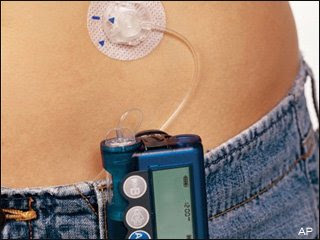Type 1 – Type 1 diabetes has also been called "juvenile diabetes" and "insulin dependant diabetes" and is most commonly diagnosed in children and young adults. This is caused when the body failed to produce insulin. It is estimated that 5-10% of American diabetics have type 1.
Type 2 – Type 2 diabetes are caused by the body does not produce enough insulin or the blood ignore the insulin. As insulin is important to bring glucose from the blood to the cell, the glucose stay in the blood and damage the body.
Gestational diabetes – It begin when the mother’s body is not able to produce and use up all the insulin needed for pregnancy. The extra blood glucose goes through the placenta and may lead macrosomia, or a "fat" baby. Babies with macrosomia face may have may have very low blood glucose levels at birth and are also at higher risk for breathing problems. Babies with excess insulin become children who are at risk for obesity and adults who are at risk for type 2 diabetes.

People suffered from diabetes is serious, but does not mean you can't live a long, healthy and happy life. The key is proper monitoring and management of your blood sugar levels.




